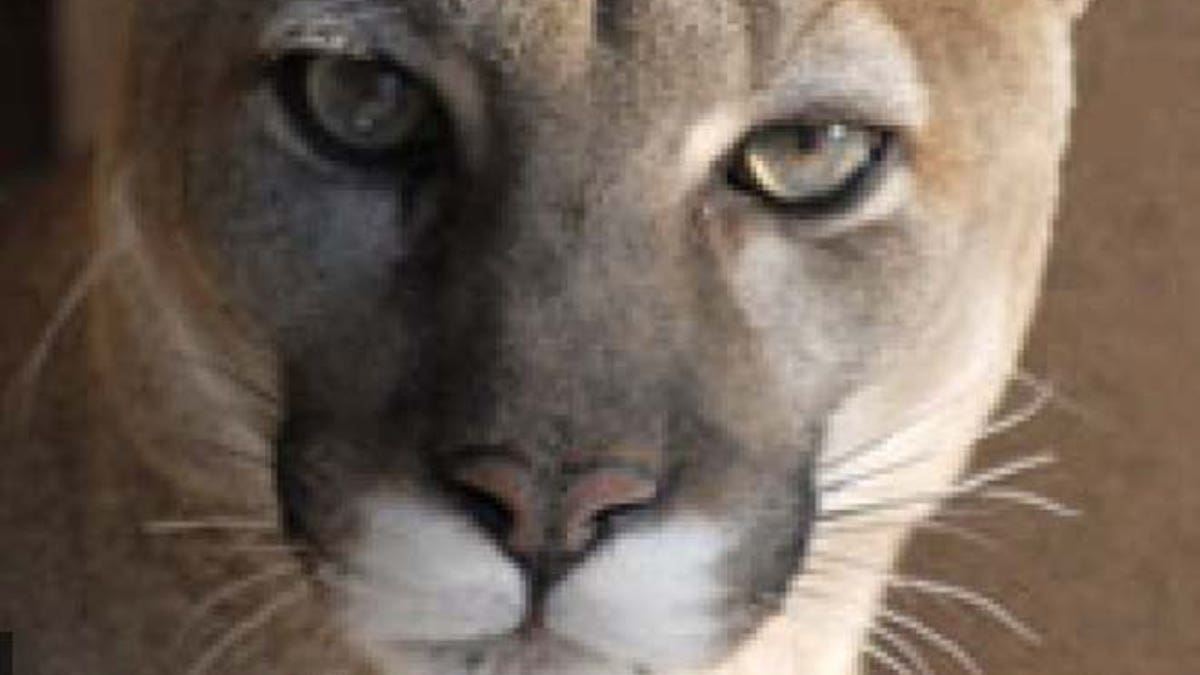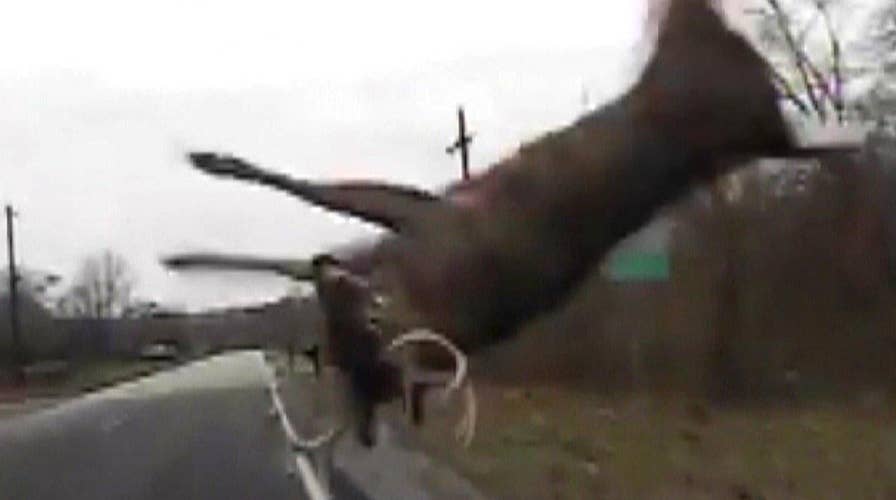Oh 'deer'! Insane dashcam video shows cop crash into buck
Heart stopping moment caught on tape in Kentucky
Big cats are the new big idea for reducing the deer population in the Northeast, where growing numbers of bucks and does wander through backyards and onto roads -- where they pose a danger to themselves and humans.
A group of scientists is calling for re-introducing cougars into states like New York and New Jersey in an attempt to lower the exploding whitetail deer population. They say the 220-pound predators are a natural solution to a problem that causes 1.2 milllion car accidents per year, including 200 fatalities.
"Recolonization by large carnivores could provide an efficient solution to the problem of deer overabundance,” wrote study authors Laura Prugh, a wildlife scientist at the University of Washington; Sophie Gilbert, a wildlife ecologist at the University of Idaho and several colleagues.
The study, published in the journal Conservation Letters, argues the region could see fewer fatalities and save $2.13 billion over the course of 30 years if the prowling beasts were reintroduced into the wild.

A 220-pound cougar could kill hundreds of deer in its lifetime, say the study's author. (Associated Press)
While the authors acknowledge "large carnivore recolonization" could lead to attacks on humans, pets and livestock, the number of lives lost would be far less than the number of lives saved.
The eastern cougar was last seen in Maine in 1938, but the cats the study refers to are also known in other regions by names including catamount, panther, puma and mountain lion. The cats have been seen as far north as the Canadian Yukon and as far south as the Andes mountains of South America.
It's not the first time scientists have thought way out of the box in an effort to cull the hoofed herds. Several locales, including New York communities of Ithaca, Staten Island and East Hampton, have spent taxpayer funds to tranquilize and sterilize deer.
Auto accidents attributed to deer also are blamed for $1.66 billion in damages and 29,000 injuries to people, making them the "most dangerous large mammal in North America to humans," according to the report.
The study asserts that a single cougar may kill 259 deer over a six-year lifespan.
The study, published last month, cites South Dakota -- where the giant cats were imported -- as a success story, noting their presence has dramatically reduced the number of deer-vehicle collisions.
The scientists argue that the Garden State, for instance, could save $2.4 million and avoid 24 injuries caused by deer-vehicle accidents annually. In New York, some $218 million could be saved each year and roughly 2,188 inuries and 16 deaths could be avoided if cougars prowled the land, they estimate.
The authors' methodical approach analyzed certain factors, like starting deer density and final deer density. It also included projections for 17 other states, such as Maine, Missouri, Ohio, South Carolina and Wisconsin.
The idea of reintroducing cougars was roundly criticized Wednesday by one state official in New Jersey.
"It doesn’t have a leg to stand on," Larry Hajna, a spokesman for the state’s Department for Environmental Protection, said of the recommendation.
"We're too densely populated," Hajna told FoxNews.com. "It makes absolutely no sense to introduce a top-line predator with so many people packed into a tight area."
The areas where deer are most problematic, Hajna noted, are places near homes with children and pets.
"I don’t understand the logic whatsoever. Cougars have been known to attack people," he said. "It seems the authors are sitting in an ivory tower out West."
In New Jersey, Hajna urged people to stop feeding the deers' voracious appetites and advocated for greater use of what he called the community-based deer management program, which allows for hunters with specific training qualifications to kill more deer in certain areas.
"It takes some political will on the part of towns to implement this program," he said.









































